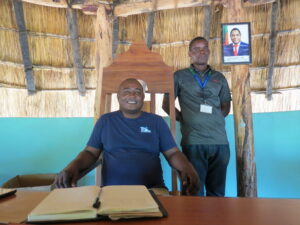Indigenous people account for up to half a billion of the world’s population and lay home to almost a quarter of the world’s land, with many residing in some of the Earth’s remotest areas. The roles of indigenous communities play an ever-increasing part in environmental protection. REDD+ is no exception, with evidence showing that they conserve up to 80% of the earth’s remaining biodiversity, that store significant levels of carbon within those territories. However, as the communities on the frontline, many have already been or are projected to be hardest hit by the impacts of climate change.
Tuesday the 9th of August marks The International Day of the World’s Indigenous Peoples – a day dedicated to raising awareness for the protection of the rights of indigenous people and celebrating their contribution to preserving culture and the environment. Recognizing this, today seeks to protect and respect the communities that play such a vital role in the planet’s future wellbeing on both national and international scales.
Zambia’s indigenous populations are integral to BCP’s ability to protect forests and fight climate change. Whilst our work aims to conserve Zambia’s forestland, it is paramount to BCP’s operational success and climate change mitigation in Zambia to remain sensitive to the rights of indigenous people and the territories in which we operate. In line with the United Nations Declaration on the Rights of Indigenous People, BCP follows internationally set standards to obtain Free, Prior, and Informed Consent (FPIC) when working with communities to protect forestland. The principles of FPIC are:
Free – consent is given without external influence and is entirely self-directed by the community.
Prior – communication commences, and consent is gained well in advance of starting project activities.
Informed – community members are provided with a clear and all-encompassing picture of the project before seeking consent.
Consent – community members reach a conclusion in line with their distinct decision-making processes, either consenting to or withholding the project operations.
FPIC provides communities with a holistic understanding of our work and ultimately leaves the decision to give or withhold consent to a project that may affect them or their land entirely in their hands. This follows the fundamental human right of self-determination and free pursuit of economic, social, and cultural development.
How does FPIC work?
We work closely with traditional leaders and hold community meetings to explain the importance of protecting forests and the community’s role in helping to do so. These meetings are used to gather vital information on the communities we would like to partner with to understand local community contexts in relation to the community forests/lands’ legal and customary rights and to identify and respect traditional decision-making structures as we do. The purpose of FPIC is to collaborate with community members and their leadership on the design and implementation of REDD+ projects in order to develop and apply approaches that are culturally appropriate and in tune with local traditions, customs, and practices. In doing so it promotes community participation in decision-making, including traditionally under-represented segments such as women and people with disabilities. Including the custodians of the forests from before the Project even exists goes a long way to mitigate the risk of social conflict around the community forests, and information exchange on REDD+ to reach consent on courses of action. Once the initial stages of FPIC have been met, together with communities we conduct mapping and “ground truthing”, which involves physically visiting and identifying proposed boundaries of forests by the communities.
Going the Extra Mile:
Going quite literally above and beyond standard FPIC practices, BCP uses light aircraft to fly community representatives over the land we aim to protect. Providing a unique perspective of the scale of the project’s impact and confirming boundaries for protected areas, this activity is invaluable to collaboratively engage communities by demonstrating the very impactful views of deforestation vs REDD+ protected areas on a wide scale from the air.
Along with protecting forests, BCP invests back into the local communities, recognizing that exclusion from development is one of the critical challenges these populations face worldwide. Through the revenue generated from carbon offsets, communities through community-elected Community Forest Management Groups (CFMGs) and Village Actions Groups (VAGs) improve infrastructure, health, WASH projects, and education, provide training in climate-smart technologies such as agroforestry, and deliver benefits at a household level such as poultry rearing and dispersing seeds.
His Royal Highness Chief Jumbe explains the benefits of REDD+ and community inclusion in his Chiefdom:
“When BCP came, luckily, they trained my village scouts, of which I was very happy because it was a big help to resource protection and conservation efforts in this area. It has also brought job opportunities to the areas. Additionally, I have seen a big difference in the training provided and the help given to beekeepers in Jumbe. Together with Nature’s Nectar, the beekeepers have access to an export market and are using sustainable honey production that doesn’t impact the forests”.
“The communities understand that if we protect the environment, bee populations will thrive, and then be able to give something to improve that family’s wellbeing. As a result, you’ll find that families who previously could not have now managed to buy solar panels. Or, for example, those having difficulties to support their children through education with supplies and uniforms, can now do so”.
BCP is incredibly proud to have, together with CFMGs and the Zambian Government, worked to support and secure community forest rights under Forest Act No. 4 of 2015 for indigenous people in Zambia. Thus far, the Zambian Government through the Director of Forestry has granted community forest use, management, and control rights to 17 chiefdoms represented by respective CFMGs in the Luangwa to Lower Zambezi Valleys.
